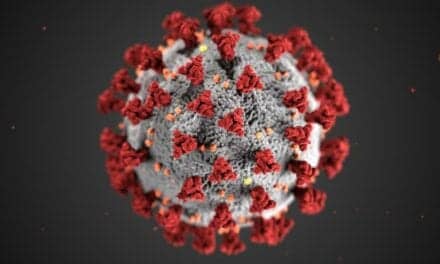Reagent shortages during the covid-19 pandemic draw attention to a different method.
By Ertan Ozyamak, PhD
Months into 2021, the covid-19 pandemic still rages on in many parts of the world. Progress has been made: Healthcare professionals have learned through grueling experience how to increase the survival rates of infected patients, and vaccines are already being administered. But the need to test for covid-19 is likely to be with us for a while.1 Public agencies stress that stopping this pandemic will require all available tools, on all fronts, including continued molecular testing for SARS-CoV-2.2,3
Early in the pandemic, the unprecedented demand for SARS-CoV-2 molecular testing created severe shortages of equipment, reagents, and other consumables.4 Manufacturers increased production as quickly as possible, but they faced an ever-increasing demand. This inability to meet demand impacted testing capacities and the ability to adequately screen populations. As a result, some countries were forced to test only those patients with high clinical suspicion of having covid-19. This gap is particularly significant in light of what the scientific community now understands about asymptomatic spread of SARS-CoV-2.
These testing material shortages have fueled efforts to find solutions and strategies that can avert bottlenecks for covid-19 testing. Here we focus on how some researchers used a chelation resin (Chelex 100 Resin, Bio-Rad Laboratories) to address reagent shortages in sample preparation components for covid-19 testing.
Old Dog, New Trick
The current standard method to detect SARS-CoV-2 in clinical diagnostics is reverse transcription quantitative PCR (RT-qPCR), but the limited availability of RNA extraction kits has held up broad implementation of this critical testing method.4 Current extraction kits are based on either spin/vacuum columns (Qiagen) or paramagnetic beads (Thermo Fisher Scientific). Typical column- and paramagnetic bead-based methods use multistep processes that are slow, low throughput, and require various consumables. In addition, they lead to operator fatigue when large numbers of samples must be processed manually. Combined, these factors can limit processing speed and turnaround times for diagnostic tests.
Automated solutions can address some of these issues, but the added equipment costs increase the already high cost for RNA sample extraction and create further challenges in resource-limited settings. Overall, there is a need to obtain and prepare SARS-CoV-2 RNA rapidly by a method involving fewer steps and consumables—ideally at significantly reduced cost—compared to the current standard. This need led researchers to examine different protocols, including, for example, one where the virus in samples (in various transport media or nuclease-free water) is merely inactivated (for example, by heat) and used directly for RT-qPCR. While such direct RT-qPCR protocols appear appealing, data indicate that they can result in lower sensitivity.5,6,7 In addition, the robustness of such protocols should be considered, particularly taking into account the scale and variability in real-world testing settings.
An alternative example is the use of Chelex 100 Resin. There is growing recognition in the scientific community of the suitability and advantages of Chelex 100 Resin to address the shortcomings of available RNA extraction kits for covid-19 testing. Chelex 100 Resin is already used for a variety of applications, but with the challenges posed by the pandemic, it is finding a new stage.
Simple, Rapid, and Cost-Effective DNA, RNA Preparation
Chelex 100 Resin is a heat-stable bead polymer with a very high affinity for divalent cations such as Mg2+. This property can be exploited to inhibit nucleases that require a divalent cation as a cofactor to protect nucleic acids and thus enable downstream detection of DNA or RNA. In fact, Chelex 100 Resin has a long history of being used for DNA extractions in forensic testing.
The exact procedure depends on the sample being processed, but a typical nucleic acid extraction procedure with Chelex 100 Resin is exceedingly simple and fast. Add Chelex 100 bead suspension to a sample, mix and heat (for example, to 70°C to 98°C) to promote cell lysis, and separate beads from the remaining sample by centrifugation (or allow beads to settle if feasible). The resulting supernatant will contain the extracted DNA or RNA. With this basic procedure, a nucleic acid sample can be prepared in as little as 2 to 10 minutes. An extraction method based on Chelex 100 Resin does not use additional reagents except when required for a specific sample and application.
Another major benefit of Chelex 100 Resin is reduced cost. A recent study comparing the cost of various extraction methods to obtain DNA reported the Chelex 100 Resin method to be vastly cheaper per sample. For example, Chelex 100 Resin was more cost-efficient by a factor of approximately 170 when compared with a Qiagen DNA extraction kit.8 This difference would be expected to be larger for RNA, given the higher cost of RNA extraction kits.
RNA Extraction—Solved
Given these benefits, researchers have assessed whether Chelex 100 Resin can fill the gap if RNA extraction kit shortages occur again during the covid-19 pandemic. Researchers from the Institute of Public Health of Chile showed that it is possible to entirely obviate RNA extraction kits and instead extract RNA from nasal swab samples of covid-19 patients by combining Chelex 100 Resin with a simple nucleic acid precipitation step that uses inexpensive reagents. This allowed SARS-CoV-2 detection in samples collected in various transport media with 100% sensitivity, specificity, and accuracy. The RT-qPCR results were equivalent to those obtained when RNA was extracted using an automated NucliSENS easyMAG System and reagents, both from bioMerieux.9
US researchers from the National Eye Institute compared a sample preparation method based on Chelex 100 Resin to various methods by both RT-qPCR and RT-ddPCR.10 Heat treatment in the presence of Chelex 100 Resin markedly improved detection sensitivity as compared to heat alone in sample collection buffers. In simulated samples, the Chelex 100 Resin method detected nearly 100% virions, whereas the conventional method (Qiagen RNeasy) could detect only 30% to 50% of virions. The authors demonstrated a limit of detection of 1 copy/ul using Chelex 100 Resin. Furthermore, collecting patient samples directly in a buffer containing Chelex 100 Resin and DMSO provided the best sensitivity for SARS-CoV-2 detection. Thus, the authors developed a method that circumvented RNA extraction kits entirely without compromising on sensitivity, and in fact improving it.
Sample preparation based on Chelex 100 Resin is also suitable for an emerging covid-19 rapid testing method, namely reverse transcription loop-mediated isothermal amplification (RT-LAMP). RT-LAMP is frequently discussed in the context of regular population-level testing. Such testing could capture asymptomatic individuals, not just patients with high clinical suspicion. RT-LAMP is operationally not as complicated as RT-qPCR, requiring only a single temperature for amplification, and could be run on standard PCR machines or just a heating block. While RT-LAMP’s sensitivity can be lower than that of RT-qPCR, RT-LAMP is generally much faster from sampling to results. Thus, sensitivity is the trade-off for higher throughput.
Researchers at the California Institute of Technology established an RT-LAMP–based SARS-CoV-2 diagnostic protocol that relies on a simple sample preparation procedure based on Chelex 100 Resin.11,12 The Caltech team’s protocol takes only 45 minutes from sample collection (saliva or swab) to result and seems well-suited for a covid-19 surveillance program. No reagents other than Chelex 100 Resin are needed for the sample preparation, which takes only about 10 minutes. Their RT-LAMP results strongly correlated with results from RT-qPCR measurements performed on clinical samples.
In another study, UK researchers from various organizations treated saliva with an inexpensive sputum digestant followed by a sample preparation step in either nuclease-free water or Chelex 100 Resin suspension. In the presence of Chelex 100 Resin, SARS-CoV-2 was detected approximately 20% to 30 % faster as compared to nuclease-free water. Importantly, Chelex 100 Resin enabled more reliable SARS-CoV-2 detection over a range of sample dilutions and helped overcome interference due to saliva.
The high throughput of both of these RT-LAMP protocols, performed on saliva samples, could enable frequent screening of populations. Saliva collection is far less invasive to patients, who themselves could perform the sampling. Given that Chelex 100 Resin is nonhazardous and does not require cold storage, it could be included in saliva self-collection kits. In addition, Chelex 100 Resin can provide improved safety for laboratory personnel as an initial heating step inactivates the live virus before samples have to be handled further. Obviously, frequent screening at population levels might lead to a renewed potential for testing material shortages. However, compared to conventional RNA extraction kits, that potential is drastically reduced with Chelex 100 Resin because the number of required reagents and materials is so much smaller.
Looking Forward

Chelex 100 Resin is an attractive RNA (or DNA) extraction method alternative to conventional kits. Studies on covid-19 patient samples show that it is well suited both for diagnostic applications, where sensitivity is a factor, and for surveillance applications. With Chelex 100 Resin it is possible to streamline a given molecular testing workflow and reduce costs. These advantages make it appealing not only for covid-19 testing, but also for routine diagnostic testing of other infectious diseases, both now and in the future.
Ertan Ozyamak, PhD, is a global product manager at Bio-Rad Laboratories. He is a life scientist and marketing professional with expertise in genetics, molecular microbiology, biochemistry, and cell biology. At Bio-Rad, he is focused on supporting and developing chromatography products to address customer needs.
References
1. Scudellari M. How the pandemic might play out in 2021 and beyond. Nature. 2020;584(7819):22-25. doi: 10.1038/d41586-020-02278-5.
2. Centers for Disease Control and Prevention. COVID-19 Testing Overview. Updated February 23, 2021. Available at: https://www.cdc.gov/coronavirus/2019-ncov/symptoms-testing/testing.html. Accessed February 23, 2021.
3. United Nations. COVID-19: Testing still vital even as vaccines roll out. UN News. November 27, 2020. Available at: https://news.un.org/en/story/2020/11/107867. Accessed February 23, 2021.
4. Charumilind S, Craven M, Lamb J, Sabow A, Wilson M. When will the COVID-19 pandemic end? McKinsey & Company. January 20, 2021. Available at: https://www.mckinsey.com/industries/healthcare-systems-and-services/our-insights/when-will-the-covid-19-pandemic-end. Accessed February 23, 2021.
5. Fomsgaard AS, Rosenstierne MW. An alternative workflow for molecular detection of SARS-CoV-2 – escape from the NA extraction kit-shortage, Copenhagen, Denmark, March 2020. Euro Surveill.2020;25(14):2000398. doi: 10.2807/1560-7917.ES.2020.25.14.2000398.
6. Merindol N, Pepin G, Marchand C, et al. SARS-CoV-2 detection by direct rRT-PCR without RNA extraction. J Clin Virol. 2020;128:104423. doi: 10.1016/j.jcv.2020.104423.
7. Smyriaki I, Ekman M, Lentini A, et al. Massive and rapid COVID-19 testing is feasible by extraction-free SARS-CoV-2 RT-PCR. Nat Commun. 2020;11(1):4812. doi: 10.1038/s41467-020-18611-5.
8. Lienhard A, Schaffer S. Extracting the invisible: obtaining high quality DNA is a challenging task in small arthropods. PeerJ. 2019;7:e6753. doi: 10.7717/peerj.6753.
9. Ulloa S, Bravo C, Parra B, Ramirez E, Acevedo A, Fasce R, Fernandez J. A simple method for SARS-CoV-2 detection by rRT-PCR without the use of a commercial RNA extraction kit. J Virol Methods.2020;285:113960. doi: 10.1016/j.jviromet.2020.113960.
10. Guan B, Frank KM, Maldonado JO, et al. Sensitive extraction-free SARS-CoV-2 RNA virus detection using a novel RNA preparation method. medRxiv. Epub. February 1, 2021. doi: 10.1101/2021.01.29.21250790.
11. Flynn MJ, Snitser O, Flynn J, et al. A simple direct RT-LAMP SARS-CoV-2 saliva diagnostic. medRxiv.Epub. November 22, 2020. doi: 10.1101/2020.11.19.20234948.
12. Howson ELA, Kidd SP, Armson B, et al. Preliminary optimisation of a simplified sample preparation method to permit direct detection of SARS-CoV-2 within saliva samples using reverse-transcription loop-mediated isothermal amplification (RT-LAMP). J Virol Methods. 2021;289:114048. doi: 10.1016/j.jviromet.2020.114048.





